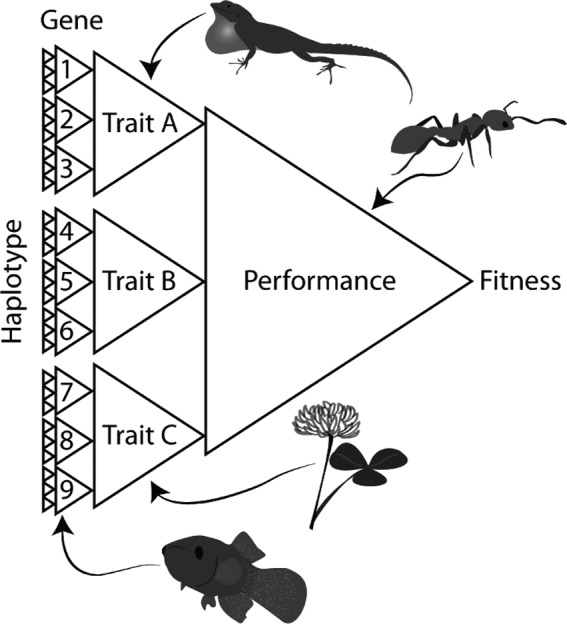Figure 3.

Convergent evolution can occur at phenotypic and genetic levels. At the highest level (organism performance), there are few solutions that would result in high fitness, leading to a large amount of parallel adaptation. But there are several different traits that could aid in that performance and even more potential genetic changes that could result in each trait shift. Each of those genetic changes in turn could be affected through multiple different genotypes. At the lowest level (genetic), many different genotypes can produce the same phenotype, decreasing the probability of observing parallelism at this level. For example, at the gene level: Fundulus heteroclitus (mummichog) at polluted sites differed in the same genes (but different haplotypes) related to pollution tolerance (Reid et al., 2016). At the trait level: in Anolis cristatellus (crested anole) and Trifolium repens (white clover), the same trait changes (morphology in anoles, cyanogenesis in T. repens) were observed in multiple urban populations (Thompson et al., 2016; Winchell et al., 2016). At the whole‐organism performance level: Temnothorax curvispinosus (acorn ant) exhibited a similar change in thermal performance in multiple urban populations (Diamond et al., 2018)
